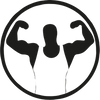If you're a guy taking testosterone supplements, you need to know about the possible side effects. One of the most common is gynecomastia, which makes your breast tissue grow. While this isn't dangerous, it can make you feel uncomfortable and self-conscious. This is tough for teenage boys, who might get upset about it.
In this article, I'll talk about gynecomastia covering its causes, symptoms, and ways to prevent it when taking testosterone. I'll also give you tips on lowering your chances of getting gynecomastia, foods you should skip supplements that might help, and exercises to try. This way, you can get the good stuff from testosterone without stressing about the downsides.
What is gynecomastia?
Gynecomastia refers to an unusual growth of breast tissue in males. While not a severe health issue, it can make people feel uneasy and self-conscious. This condition can show up in one or both breasts and may happen at any point in life. You'll see it most often during the teenage years, but older men can also develop it because of hormone changes.
Reasons for gynecomastia when taking testosterone
Testosterone, a male hormone, plays a key role in developing male traits like muscle mass, bone density, and body hair. When testosterone levels drop, doctors might prescribe supplements to boost them. However, these supplements can also cause estrogen levels to rise, which may lead to gynecomastia.
Besides testosterone supplements other factors can trigger gynecomastia. You should know about these additional causes:
- Medications: Some medications like anti-depressants anti-anxiety drugs, and blood pressure medications have an impact on gynecomastia.
- Health conditions: Health conditions such as liver disease, kidney disease, and hyperthyroidism can also lead to gynecomastia.
- Illegal drugs: Using anabolic steroids, marijuana, and heroin can also result in gynecomastia.
Symptoms of gynecomastia
Gynecomastia symptoms may include:
- Larger breast tissue
- Swollen and tender breast area
- Nipple discharge in some instances
See your doctor right away if you notice any of these symptoms.
How to prevent gynecomastia while taking testosterone
Gynecomastia often happens when you take testosterone supplements, but you can do several things to avoid it. Here are some tips:
1. Keep an eye on your testosterone levels
You should check your testosterone levels often to make sure they don't get too high. When testosterone levels climb too much, estrogen levels can rise too, which might cause gynecomastia. Your doctor will test your testosterone levels and change your dose if needed.
2. Think about other ways to treat it
If you're at high risk for gynecomastia, your doctor might recommend other ways to treat it, like aromatase inhibitors. These drugs can stop testosterone from turning into estrogen, which lowers your chances of getting gynecomastia.
3. Put on compression garments
Tight undershirts and other compression clothes can make gynecomastia less noticeable. They can also help if your chest feels sore or tender.
4. Pay attention to what you eat
Some foods can boost estrogen in your body leading to gynecomastia. Stay away from high-estrogen foods like soy items, flaxseeds, and chickpeas.
5. Exercise
Working out helps to lower your chances of getting gynecomastia. It burns extra body fat and builds muscle. Strength training, like lifting weights, works well.
Ways to lower your risk of gynecomastia
Besides the tips we've talked about, you can do other things to cut down your risk of gynecomastia. Here are some more ideas:
- Keep your body weight in check
- Don't smoke or drink too much alcohol
- Stay away from illegal drugs like steroids and pot
- Keep your stress in check as it can mess with your hormone levels
Foods to skip when you're on testosterone
We talked about this before, but some foods can bump up estrogen in your body, which might lead to man boobs. Here's what you should stay away from:
- Anything soy-based like tofu, soy milk, and soybeans
- Flaxseeds and their oil
- Chickpeas and other beans
- Dairy stuff like milk and cheese
- Booze
Supplements to take with testosterone
Besides steering clear of certain foods, you can also take some supplements to lower your chances of developing gynecomastia. Here are a few supplements to think about:
1. Zinc
Zinc is a key mineral that has an impact on many body functions, including hormone control. It can help cut down on testosterone turning into estrogen, which lowers the risk of gynecomastia.
2. Vitamin D
Vitamin D is crucial for healthy bones and plays a part in hormone control. It can help reduce the risk of gynecomastia by keeping estrogen levels in check within the body.
3. Fish oil
Fish oil contains omega-3 fatty acids that help to lower inflammation in the body. It also helps to decrease estrogen levels, which lowers the risk of gynecomastia.
Exercises to lower the risk of gynecomastia
Exercise can lower the risk of gynecomastia. Consider these exercises:
1. Weightlifting
Resistance training like weightlifting builds muscle mass and burns body fat. This leads to lower estrogen levels in the body, which reduces the risk of gynecomastia.
2. Cardiovascular exercises
Cardiovascular exercises like running, cycling, and swimming can burn extra body fat. This has an impact on lowering estrogen levels in the body, which may cut down the risk of gynecomastia.
3. Yoga
Yoga helps to lower stress levels, which affect hormone levels in the body. It also improves flexibility and balance.
Medications to prevent gynecomastia
If you have a high risk of developing gynecomastia, your doctor might prescribe medications to prevent it. Here are some medications that your doctor may suggest:
1. Tamoxifen
Tamoxifen has an influence on blocking estrogen's effects in the body. Doctors prescribe it to treat breast cancer in women, but it also helps to prevent gynecomastia in men.
2. Aromatase inhibitors
Aromatase inhibitors have an impact on stopping testosterone from turning into estrogen. Doctors often use them to treat breast cancer in women, but they also work to prevent gynecomastia in men.
Conclusion
Gynecomastia often happens when you take testosterone supplements, but you can stop it. You can lower your chances of gynecomastia by keeping an eye on your testosterone levels eating right, taking supplements, and working out often. If you notice any signs of gynecomastia, you need to talk to your doctor right away. Keep in mind, it's always better to prevent than to treat.
If gynecomastia worries you while you're on testosterone, talk to your doctor. They can tell you more and suggest what's best for you to do.































